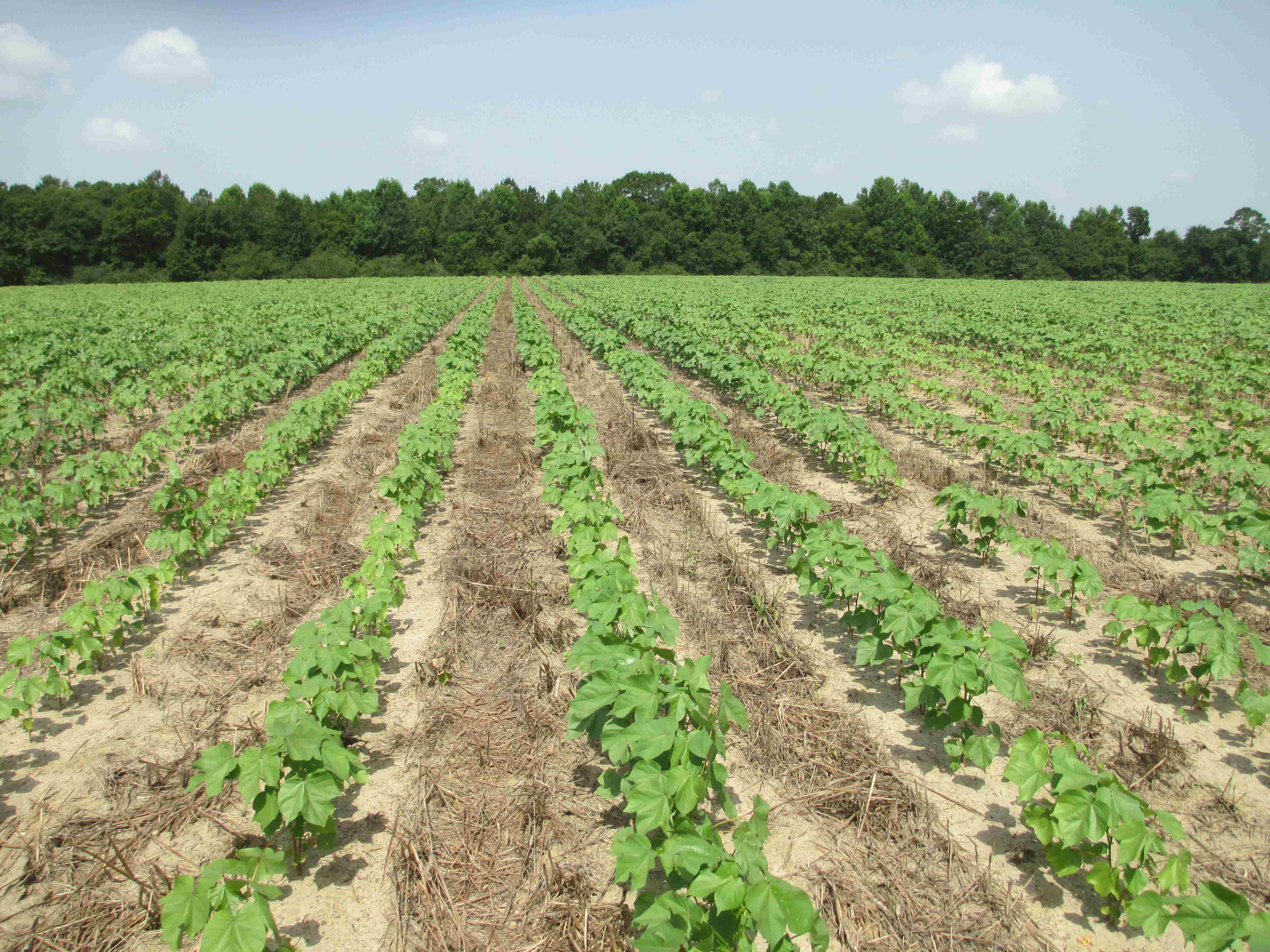Fertilizing cotton is always a major factor that affects yield in the Panhandle. Last year we saw plenty of cotton fields run out of nitrogen (N) during the summer with the relentless rains. We also saw growers trying to apply N, through irrigation or ground, when it was too late to do any good. So what are some fertilization guidelines that years of research provide us with?
Phosphorous and Potassium
Phosphorous (P) and potassium (K) fertilizers should go out prior to or at planting and should be based on soil test recommendations. These nutrients are essential for good early season growth and can be applied in a complete fertilizer blend (i.e. 5-15-30). It is not necessary to apply more than 20-30% of the total N at planting because the main N demand does not begin until cotton starts blooming.
On sandier fields it may be a good idea to split K applications, applying half at planting and half with N sidedress. This is because K can be leached in sandier fields. K deficiency has been shown to be a cause of some leaf spot diseases that occur later in the season.
Nitrogen and Sulfur
Nitrogen obviously has a major impact on yield. Research shows that side-dress N should be applied between squaring and first bloom.
Total N for the season should range between 60 – 120 lbs/acre. The amount needed will vary depending on soil type and yield potential. Greater yield potential will require a rate towards the upper end of the range, however, a low N rate does not necessarily mean low yields. With good rainfall, even some non-irrigated farms can make 2 bale cotton with 70 lbs. of N on heavier soils. Rainfall is usually a more limiting factor than N.
Sulfur is also an important nutrient for cotton production, especially in sandier fields. The recommended rate of sulfur is 10 lbs/acre. This can be achieved by using ammonium sulfate (21-0-0-24S), liquid “28” which is 28-0-0-5S, or “K-mag” which is 0-0-22-22S-11Mg.
How late is too late for N?
Unfortunately, some growers learned this the hard way in 2013. Multiple years of research from Dr. David Wright and others has shown that applying N beyond the 3rd week of bloom will not increase yield. This is true even if the field is deficient in N. When it gets late in the season, cotton naturally begins to look pale green or slightly yellow. This occurs because the plant is sending its nutrient resources into the young bolls, and does not necessarily indicate an N deficiency. According to Dr. David Wright, UF/IFAS Extension Agronomist, excess N during late bloom has actually shown decreased cotton yields in some trials.
If you have more questions about cotton fertilization or production see Cotton Cultural Practices and Fertility Management or contact your local UF/IFAS Extension Agent.
- Carinata Starting to Come Up in Jackson County - December 12, 2014
- Wheat Production Considerations for 2014-2015 - November 10, 2014
- Peanut and Cotton Harvest Video 2014 - November 10, 2014


